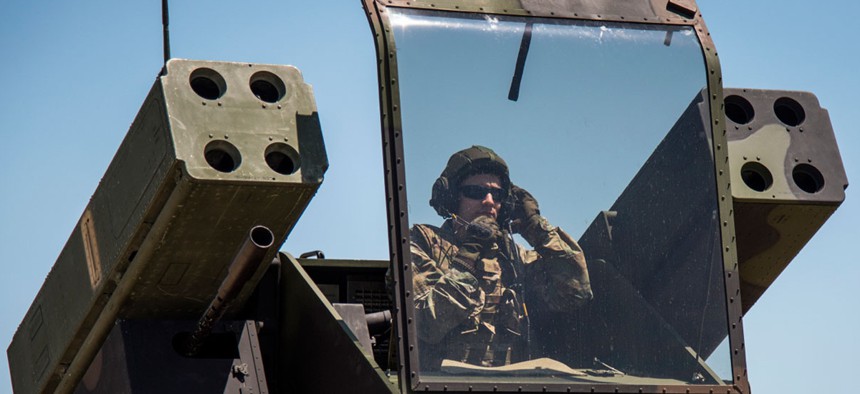
A soldier prepares to fire a Stinger missile from an Avenger vehicle at Eglin Air Force Base in Florida. Samuel King Jr./Air Force
Stinger Missiles Can Now Shoot Down Small Drones
A missile that gained notoriety in the 1980s has been updated for today’s battlefield.
The four-decade-old Stinger missile has a new mission: shooting down small drones.
The U.S. Army and Raytheon modified the shoulder-fired weapon — better known for being able to shoot down aircraft and cruise missiles — as part of a Pentagon search for new ways to down that kind of small, cheap drones that Islamic State militants have been known to pack with explosives.
In recent tests at Eglin Air Force Base in Florida, modified Stingers took down a MQM-170C Outlaw and another unidentified drone, according to Raytheon.
Raytheon swapped out the Stinger’s direct-impact warhead, which explodes upon collision with an aircraft, for a proximity fuze that detonates when it detects a nearby airborne target, Raytheon said.
“The new proximity fuze gives ground forces the ability to engage small, elusive targets using a proven, familiar system,” Kim Ernzen, vice president of Raytheon's Land Warfare Systems product line, said in a statement.
In recent years, defense firms have pitched various ways to take down small drones using electronic attack, jamming signals, or even finding a way to hack into the drone and force it to land. Early this year, it was revealed that a U.S. ally shot down a small $200 quadcopter drone with a $3 million Patriot interceptor. A modified Stinger certainly presents a cheaper alternative.
Raytheon touts the “combat proven” Stinger’s “more than 270 fixed- and rotary-wing intercepts” in four major conflicts. The missile can be fired not only from a soldier’s shoulder, but vehicles and attack aircraft. The Stinger gained notoriety for its use by the Mujahideen during the Soviet occupation of Afghanistan in the 1980s.







